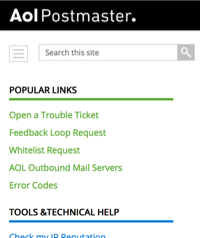Changes to AOL FBL
In a blog post today, AOL announced they are changing the from address on their FBL emails from scomp@aol.net to fbl-no-reply at postmaster.aol.com. This change will take place on January 16th, 2017.
While this may seem a minor change to announce so far in advance, it’s really not. Because AOL was the first FBL, there are many tool chains that have been kludged together to handle the messages. Many of these tool chains rely on “scomp” in the header to work.
This is as good a time as any to review your current FBL handling code. Are you handling FBL messages correctly? Is there anywhere in your code that does things based on scomp being in the header?
Actually, it’s a good time to take a step back and think about FBLs in general and what you should be doing with the mail. These aren’t just complaints, they are direct feedback from your recipients. Sure, they just have to hit a button, but it’s still feedback.
Do you listen to that feedback or just unsubscribe folks?
Do you pay attention to which campaigns, mailings and offers trigger higher levels of FBLs?
Do changes in FBL rates factor into your marketing strategy at all? Why not?
Do you even know what happens when a FBL email arrives at your sever? Are you sure?
All of these are useful questions to ask at any time. But now that some folks are having to touch the FBL code, maybe it’s a time to develop a strategy for FBL processing. Use that data to inform and improve your marketing.
